One of the most difficult things to deal with in life is having to wake up one day and realize that you have lost your hearing. It is an unexpected condition that has left many frustrated and unable to come to terms with it, save for the costs incurred for you to hear again. Journal of the American Geriatrics Society in 2010 gave a projection that the cost for the first year of treatment for hearing loss will increase by 500% plus from $8 billion in 2002 to an estimated $51 billion in 2030. If this isn’t a catastrophe, I don’t know what is.
Hearing loss is a condition that affects adults and is common among the older generation. A person in a group of three has a hearing problem that is slowly fading away. It is a true say, that chances of developing hearing loss increases as one grows older. Sadly, of the many that are affected, few seek help while others do so when they are 5 to 15 years late. This is according to a report by a 2012 Healthy Hearing magazine. Lateness in seeking help for a hearing loss poses difficulties like hard adjustments to hearing aids and incurs lots of expenses. A report by Better Hearing Institute on The Impact of Untreated Hearing Loss on Household Income shows that those with mild hearing loss earn $12,000 more than those profound in the condition. It further projected a $122 billion of lost earnings in the United States as a result of the untreated hearing loss.
Before you miss out on life, become a burden to your family and or slowly lose interaction with the society, seek help immediately you develop signs of hearing loss.
Mild or not, hearing loss has long-term effects on the overall health and income of an individual. #HealthStatus
Key Points
- 1The occurrence of hearing loss results from simple factors like exposure to noise, as such, avoid places with loud noises and if necessary, wear protective gear where necessary.
- 2It is always best to keep an eye on your hearing condition with regular testing which can now be done in your home.
- 3Before taking any antibiotics, undergoing treatment or ignoring a disease, make sure you understand all the risk factors included or accompanied to avoid hearing loss problems.
How does hearing loss occur?
For the sake of those who do not know what others already do, there are three types of hearing loss namely: conductive, sensorineural hearing loss (SNHL) and mixed hearing loss. The first type is as a result of a problem with the eardrum, ear canal or middle ear with the second caused by problems of the inner ear. Mixed hearing is a combination of the first two.
Most of these problems include earwax buildup, ruptured eardrums, infections and damage to the inner ear. By far, aging contributes as the common cause of hearing loss in adults. Understanding how hearing loss occurs calls for first understanding how our ears hear.
Once our outer ear (ear lobe) traps sound, it transmits it as vibrations through the middle ear where they are amplified on their way to the inner ear. They go through the cochlea fluids where the tiny hairs with nerve cells convert the vibrations to electrical signals. The electrical signals are in turn transmitted to the brain where they are translated. How we can tell one sound from another is because different sounds have different vibrations with varied effects on the receptors. Depending on their degree, the loudness of a sound can cause hearing loss.
What we perceive and hear is measured in decibels. The normal range of the decibels humans can hear between 0 and 20. In the case of a hearing loss, the decibels increase. A mild hearing loss decibels range from 21 to 40, moderate hearing from 41 to 50, less severe loss from 56 to 70 and severe hearing loss from 71 to 90 decibels. What we call profound hearing have decibels higher than 90. People who can perceive decibels of 71 and above have trouble figuring out speeches except for loud enough noises like a plane’s take off.
Here are the various ways in which hearing loss occurs.
Infections
It is among the number one causes of hearing loss. Luckily, it can be easily treated. Also referred to as Otitis Media, ear infections cause inflammations in the middle ear. In extreme cases, mucus gathers and blocks the Eustachian tube as a result of allergies or cold. When this happens, the drainage and pressure maintenance within the ear fails. Fluid build-up attracts bacteria which multiplies and continue their cycle until hearing starts to diminish. The thickness of the build-up fluid influences how much you can hear. The lowest will be 24 decibels with the highest being 42. However, this condition can be treated within the first ten days with antibiotics until it clears. Failure to treat ear infections lead to lots of problems in the long run.
Loud Noises
Loud noises, believe it or not, can cause permanent loss of hearing. This especially happens when one is exposed to loud noises for a long time. About 70%, said a 2011-2012 survey by National Health and Nutrition Examination, of people exposed to loud noise never or hardly wear hearing protection. What this means is that many of those exposed to loud noises are susceptible to hearing loss. How does this happen? The hair cells get damaged, and without them, we will hear nothing. Some of the loud noises that can cause deafness include loud music, especially on headphones or earphones, plane take-offs, traffic noise, sporting events, rock concerts, sirens and surprisingly, washing machines!
Age
Unfortunately, this is a cause which is inevitable and is bound to occur as you tend to grow older. It is the biggest cause of hearing loss and is commonly referred to as age-related hearing loss. In the medicine world, it is known as presbycusis.
At the age of 40, most people start experiencing hearing loss. By 80, they will have deteriorated to the point that they cannot hear voices of high frequency like children’s or women’s. Hearing some consonants also become increasingly harder. Why does this happen? The elasticity of some parts in the ear occurs, and hair cells damage slowly leading to less sound wave transmission to the brain. A hearing aid can be used in this case.
Earwax
Yes, it is another necessary evil we have to deal with. In as much as they protect the ear from the entry of foreign particles like dust and micro-organisms, they can cause blockage in the ear. The earwax (cerumen) produced by the ear is regularly flushed out. However, other times overproduction of cerumen occurs. When this happens, the earwax begins to slowly harden and blocks sound from traveling through the canal. This calls for the removal of the wax.
Some methods of earwax removal are risky and can lead to further worsening of the condition. Using ear buds or cotton swabs is an effective way for some but what they do not know is that over time, it causes ear compaction that will call for a need to visit the doctor. The ideal way to remove earwax is by using hydrogen peroxide or mineral oils. For extreme cases, medical attention would be appropriate.
Eardrum Problems
Eardrums can either get raptured or damaged causing partial or permanent loss of hearing. Complacency in attending to or seeking medical assistance in case of an ear infection have long term problems. Untreated, it causes pressure imbalance which eventually bursts the eardrum. The pressure may result in a tear in the various layers of the eardrum; the thin membrane, the firm middle layer or the outer skin layer, which plays the role of a barrier between the inner and outer ear. Loud noises, nonetheless, can also cause an eardrum perforation which in turn refuses to let the sound go through in the ear. Some perforations caused this way sometimes close automatically after a while, however, in some cases, surgery becomes a necessity.
The eardrum can also get damaged in some ways. A good example is by trying to remove earwax using sharp objects or using other crude methods to remove them. This leads to gradual hearing loss. Hair cells that distinguish soft from loud noise in the eardrum, similarly, can be interfered with or damaged. This makes them to either get a little stimulated or fail completely to pick sound. Since there is no solution for the broken-down hair, hearing aids become the next best cure for this cause.
Cholesteatoma
Probably, you’ve never heard of this condition but is one other thing to worry about when it comes to hearing problems. It is an unusual and out of the norm condition that leads to the formation of skin cells inside the ear. It results from a malfunction of the eustachian tube or a collapsed eardrum due to damage which provides a receptacle for dead skin cells produced by the ear to collect. It is also a hereditary condition. Untreated, it becomes lethal as it gradually grows to a point where the tiny bones in the inner ear and the organs for hearing become damaged. It also causes infections that produce a discharge in the ear, vertigo and tinnitus which are all detrimental to one’s hearing.
Otosclerosis
Otosclerosis is a common cause of mild to severe hearing loss in young adults. It refers to a condition in which a bone growth develops abnormally in the ear. When sound waves hit the three small bones in the ear, they transmit sound to the cochlea which converts and sends them to the brain. In the case of otosclerosis, the bones fuse together and remain fixed and unable to vibrate. What this means is that no sound will be transmitted to the cochlea and nothing to the brain. It affects one or both ears and is characterized by quiet speeches, difficulty in hearing low or deep sounds which includes whispers and funny enough, the ability to hear when there is noise in the background. When it spreads to the inner ear, a lot of damage can occur. It can be corrected through hearing aids or surgery.
Head Injury
Physical injury to the head can cause a myriad of medical related problems and hearing loss is one of them. A skull fracture, for instance, can puncture a hole in the eardrum and damage the structures that enable for sound wave vibrations. This results in hearing loss.
Tumors
Tumors are benign or cancerous growths that cause severe health problems. It apparently causes hearing loss as well. Examples include meningioma, acoustic neuroma, and paraganglioma. It causes ringing in the ears, and over time, the inner ear gets affected leading to complete hearing loss.
Not limited to the above causes and how they lead to the occurrence of hearing loss, other factors or diseases like measles, mumps, syphilis, and meningitis. Meniere’s disease, poor ear formation, medications like antibiotics, excessive amounts of aspirin, radiotherapy for certain types of cancer, chemotherapy drugs, hereditary factors, brain inflammations, stroke, multiple sclerosis, autoimmune conditions to say the least also contribute to the condition.
All these conditions and diseases cause either partial or complete loss of hearing in one way or another. Consequently, they all have different ways of treating or curing them. The most common way and solution for partial hearing are through hearing aids. Nonetheless, what you ought to know is that the cost accompanied with the treatment of hearing loss, depending on the cause and mode of cure is costly enough if not treated at early stages.
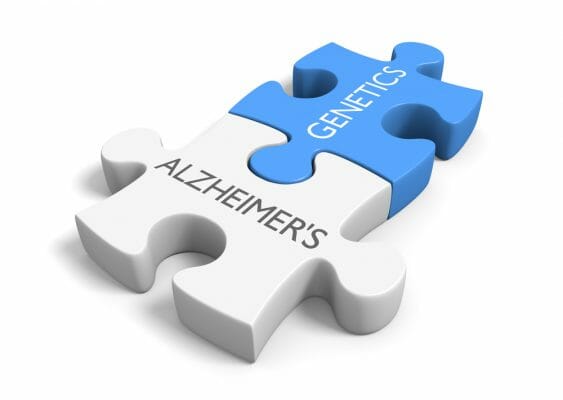

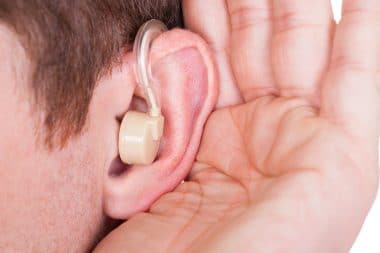

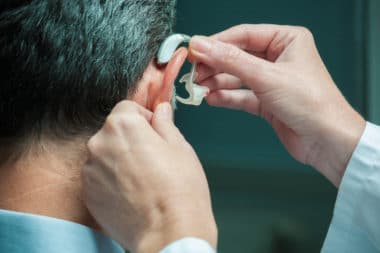
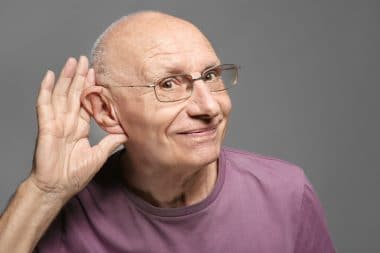
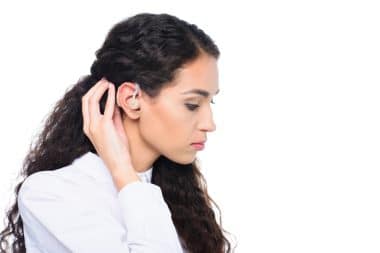

Reply